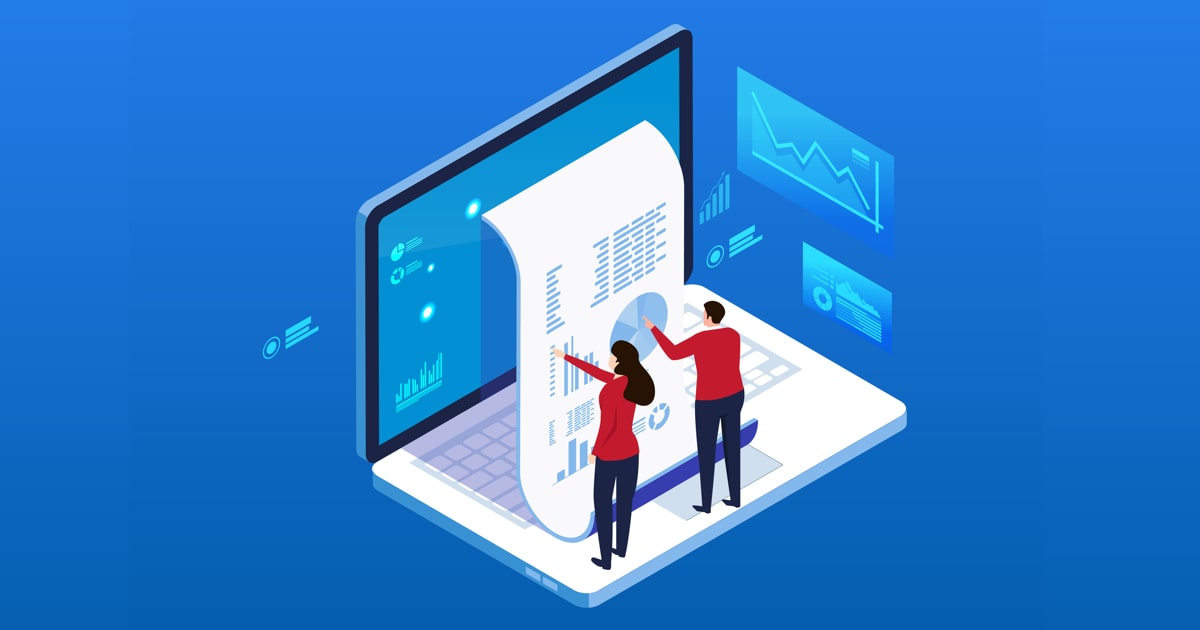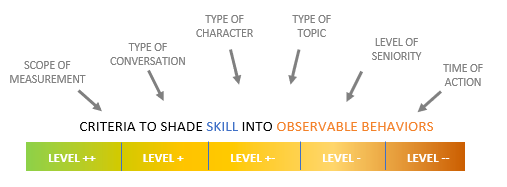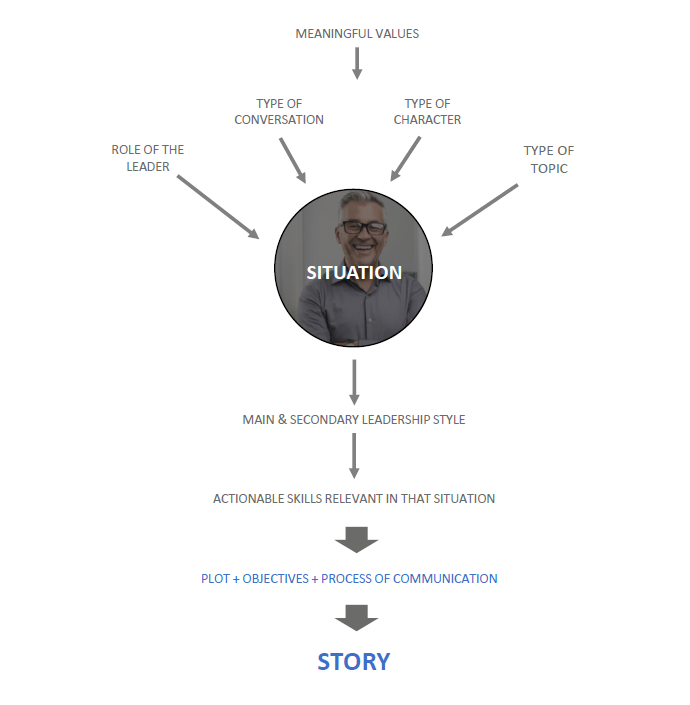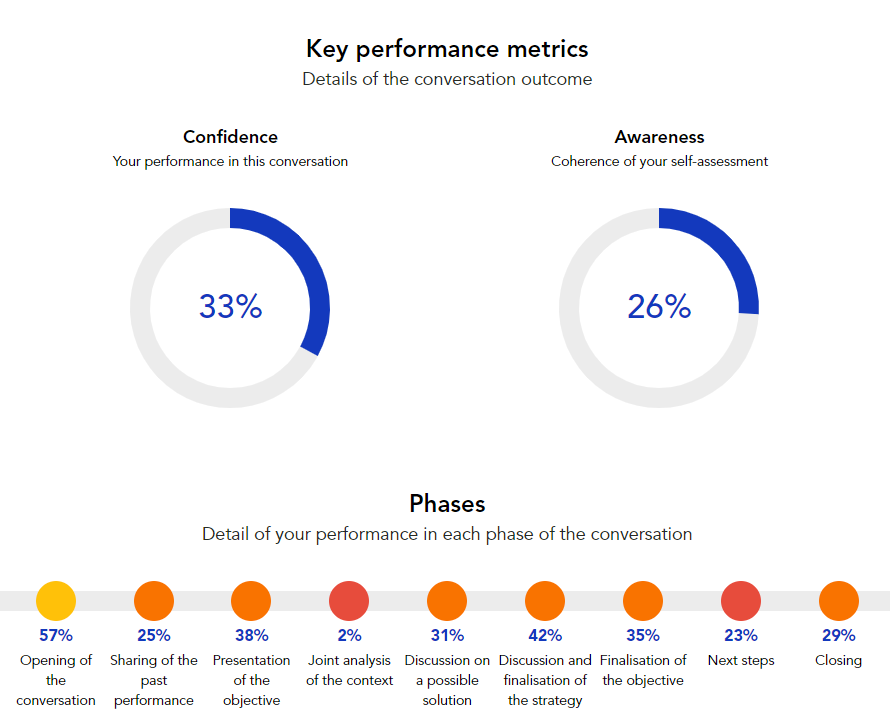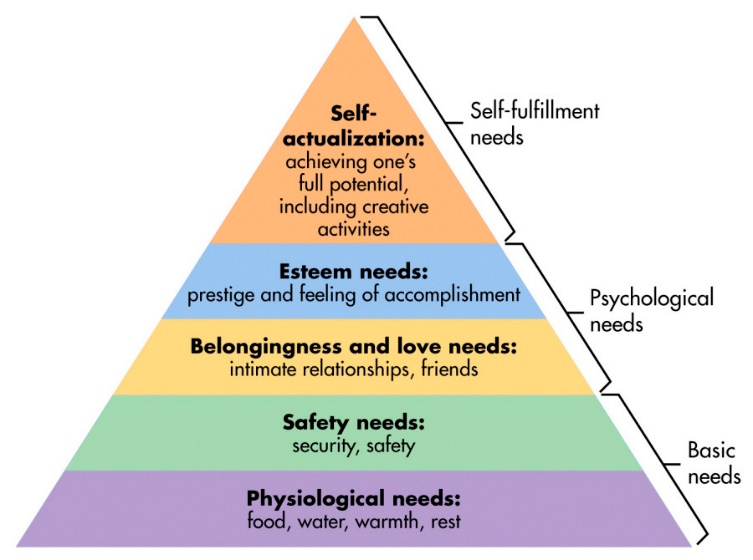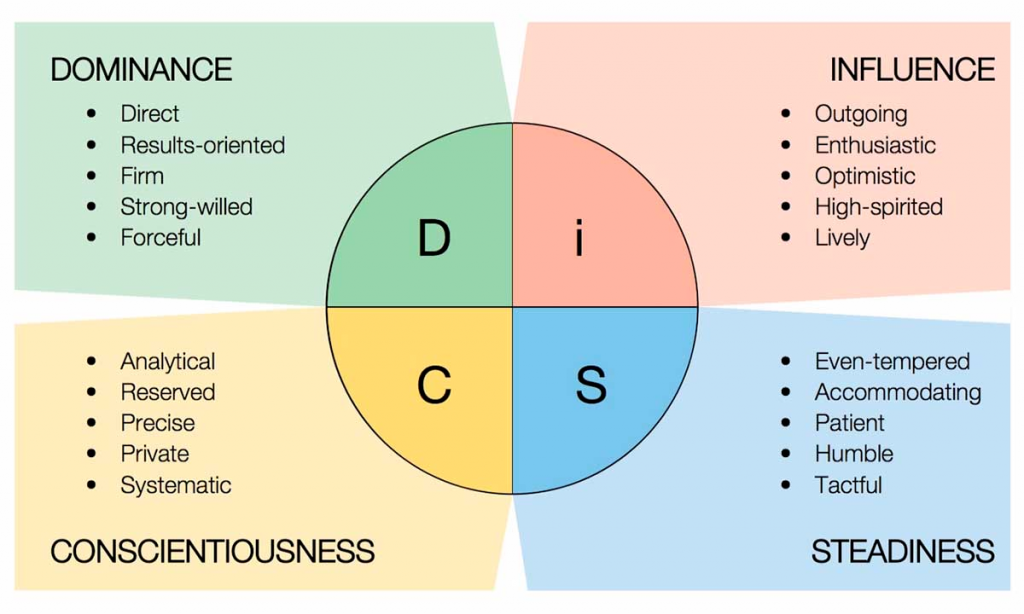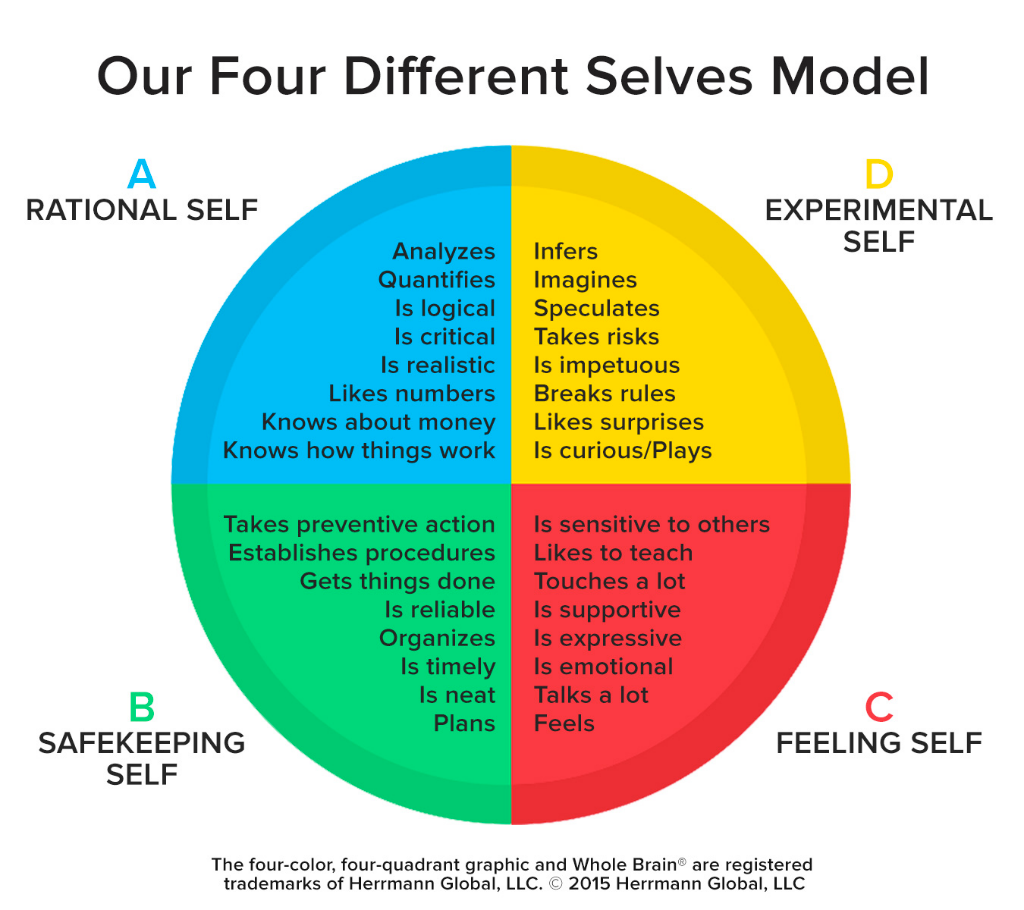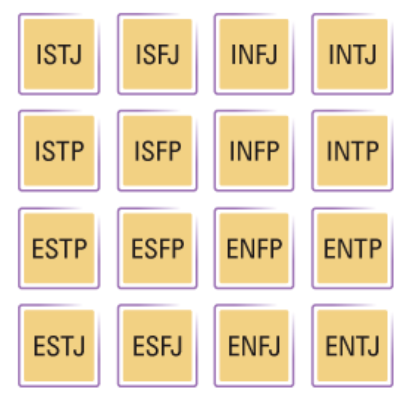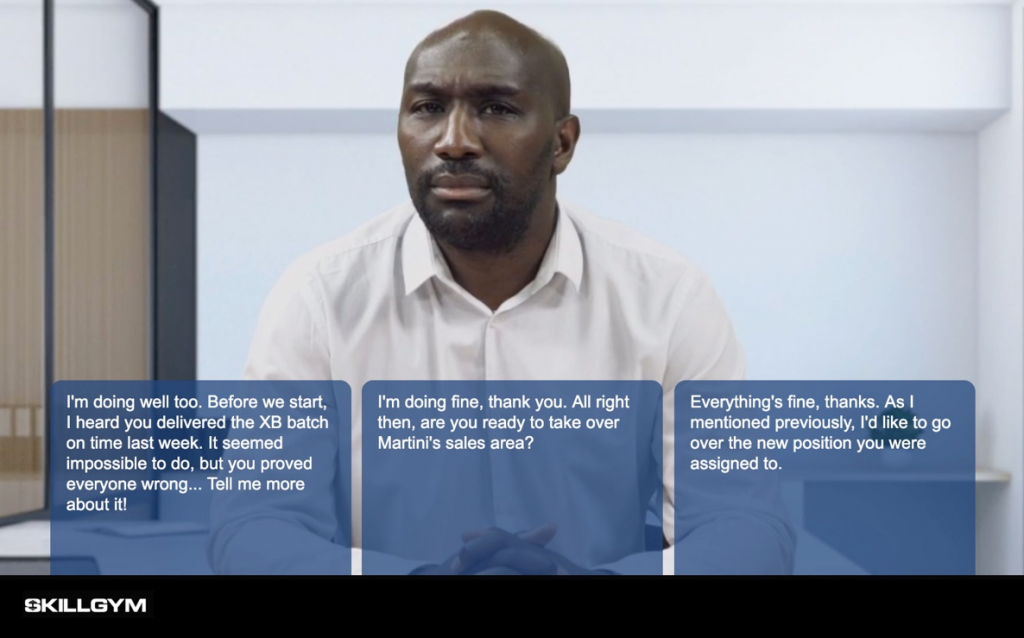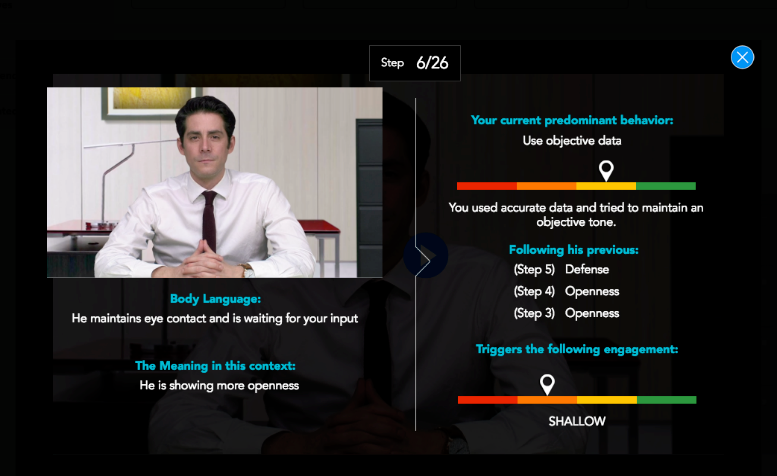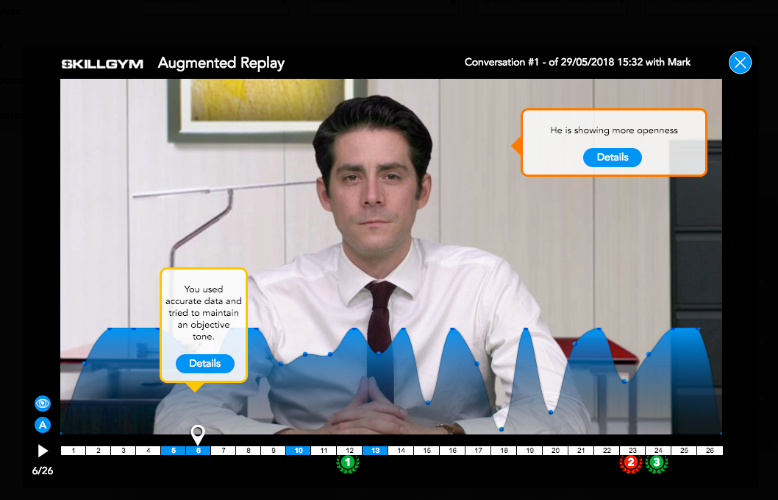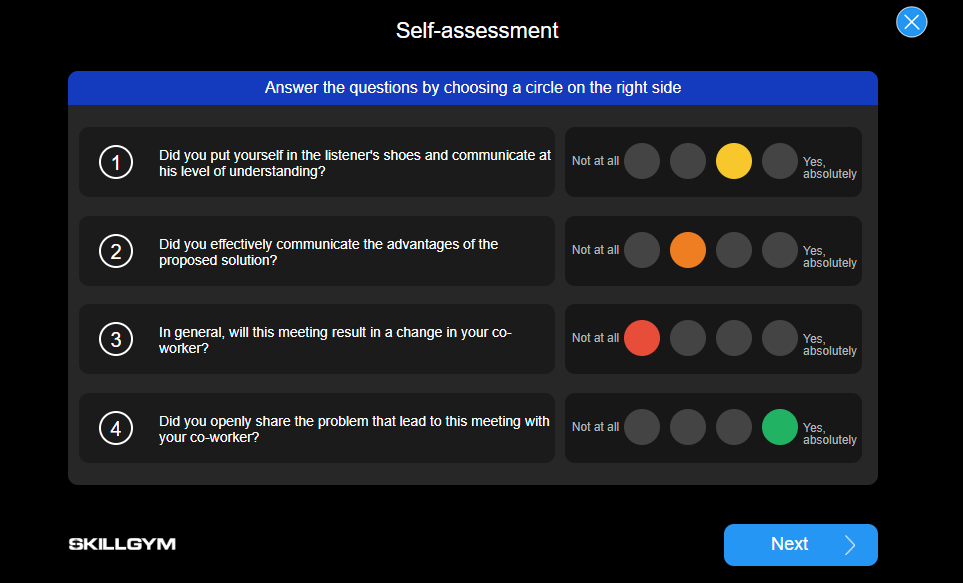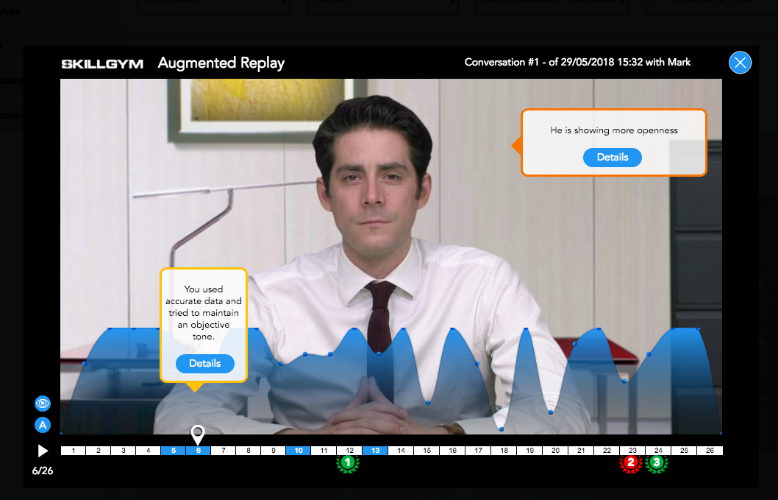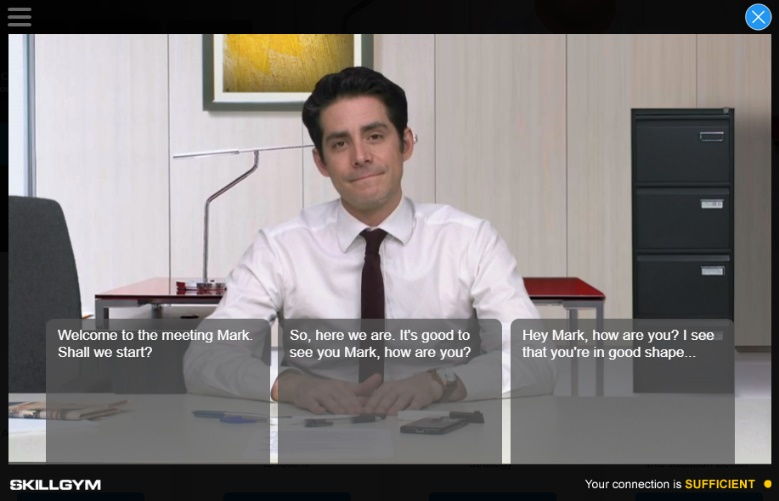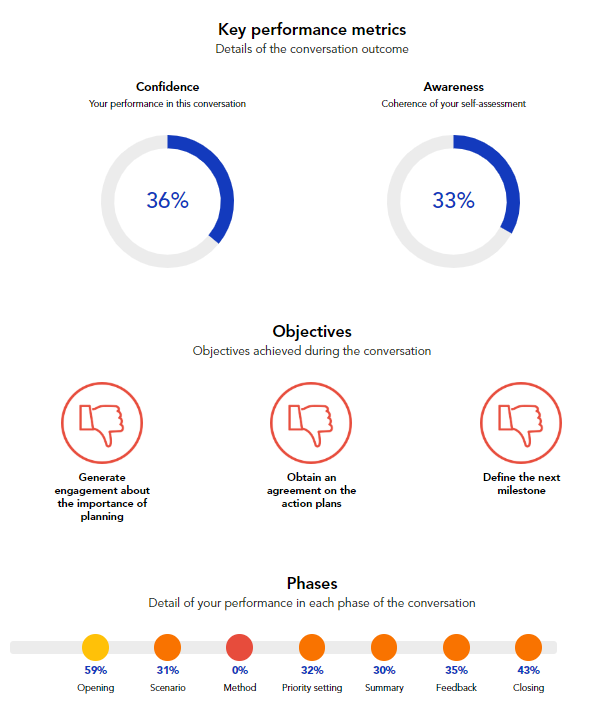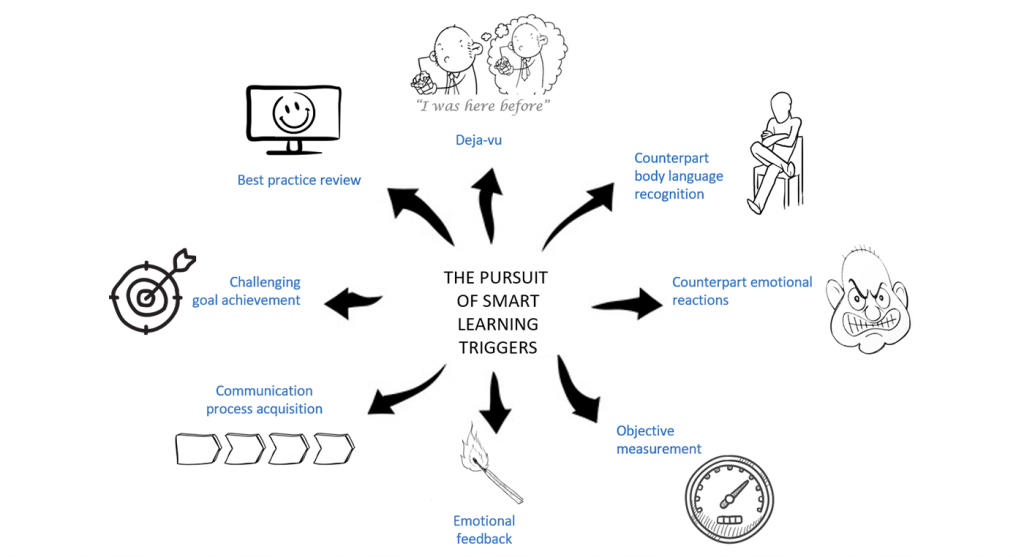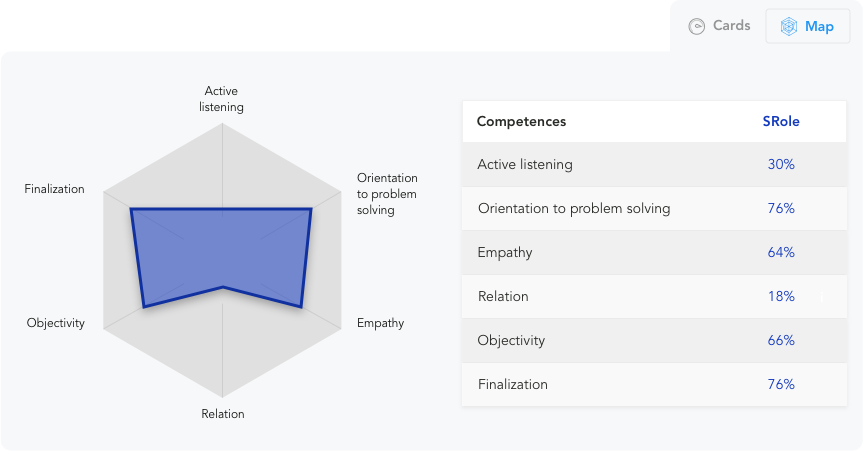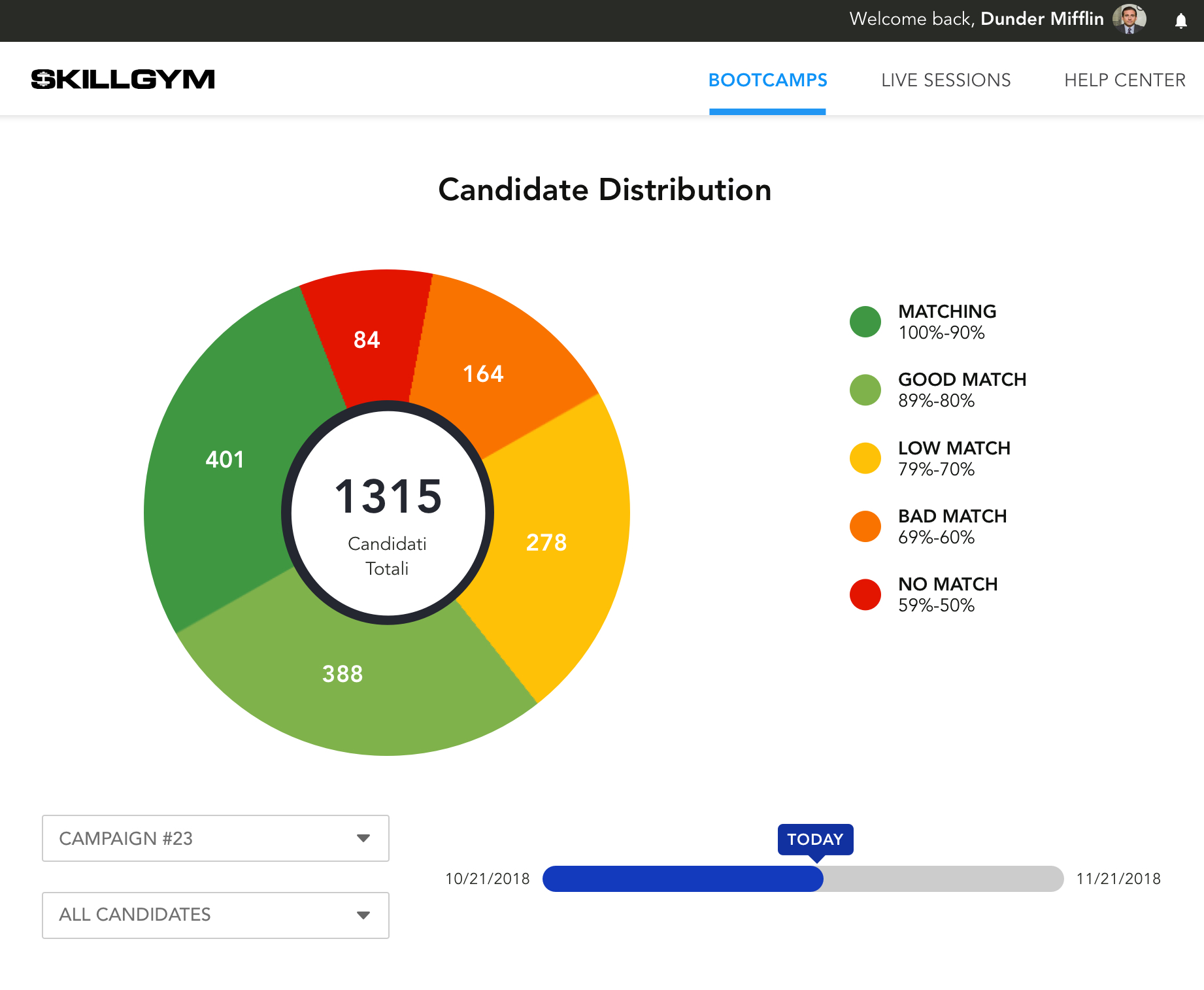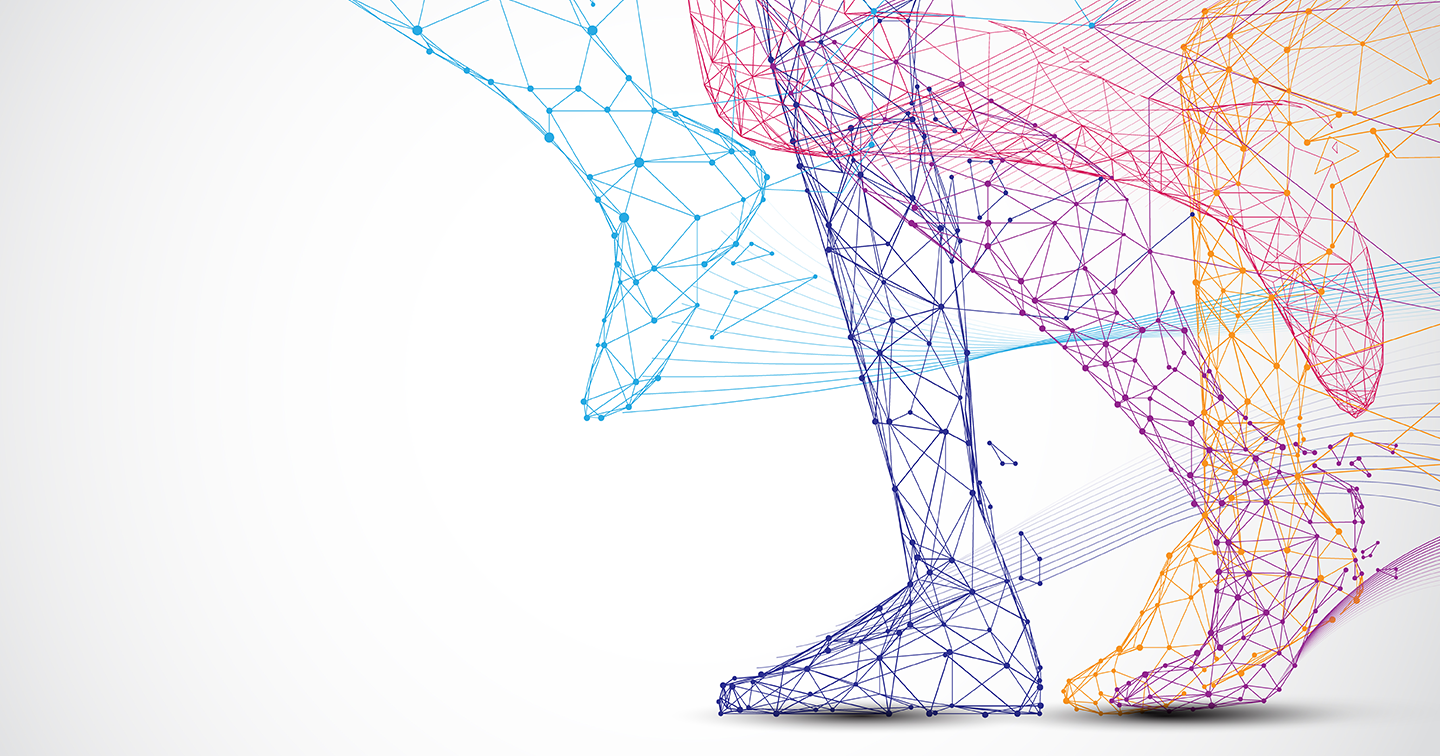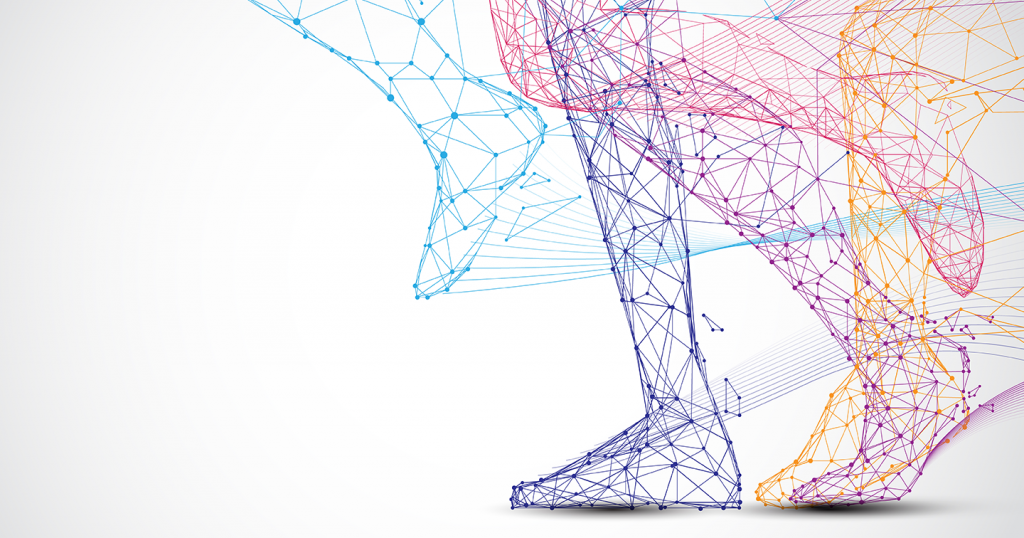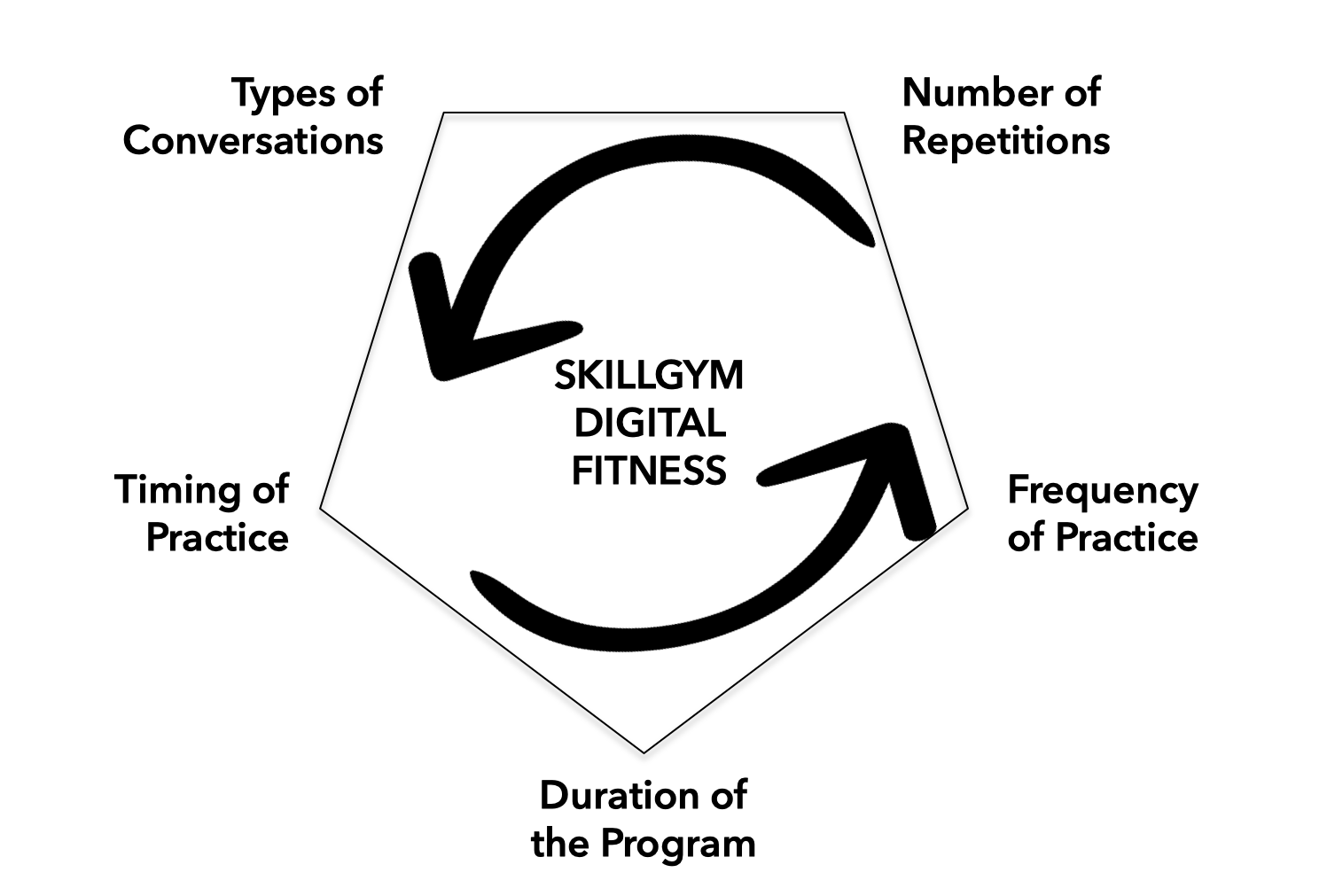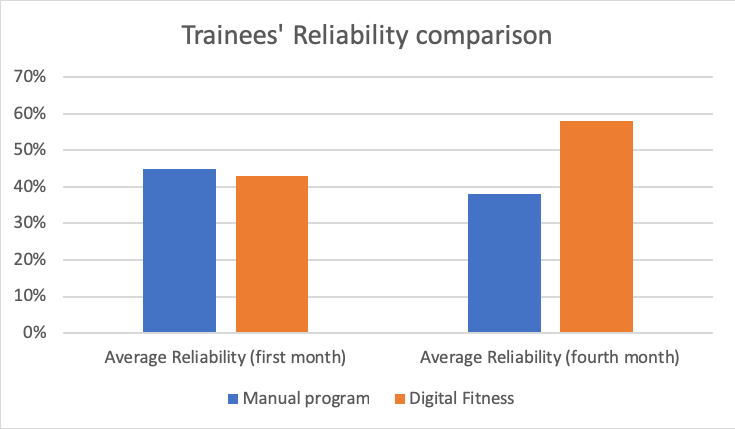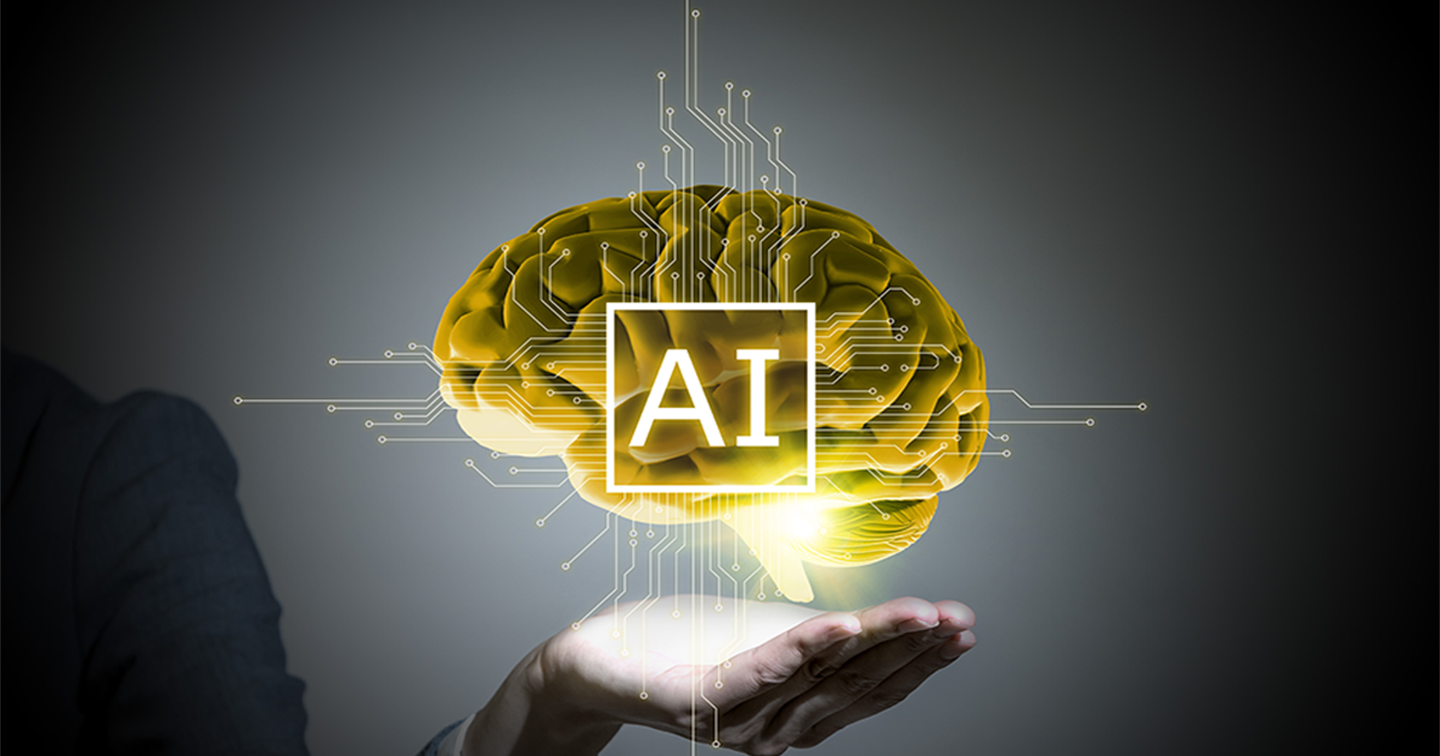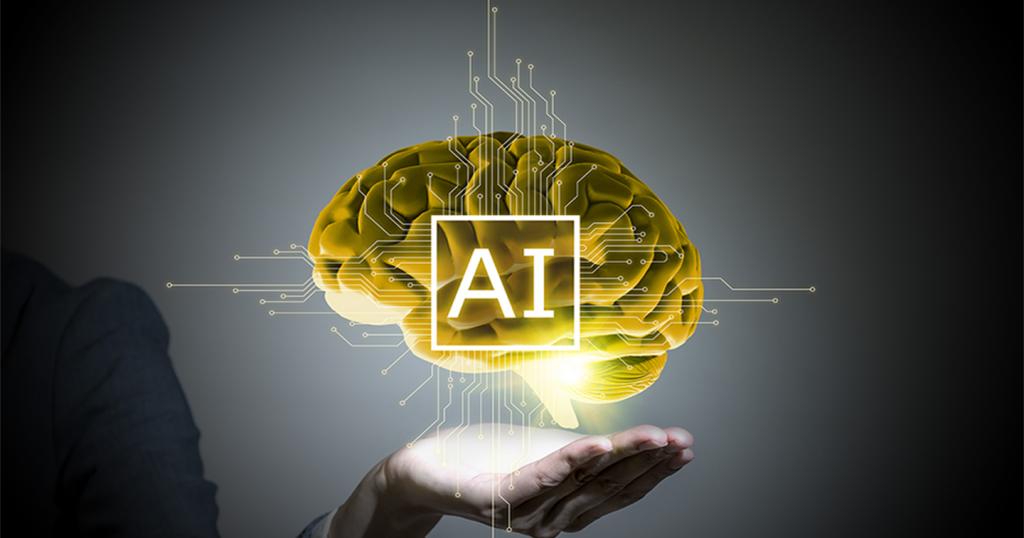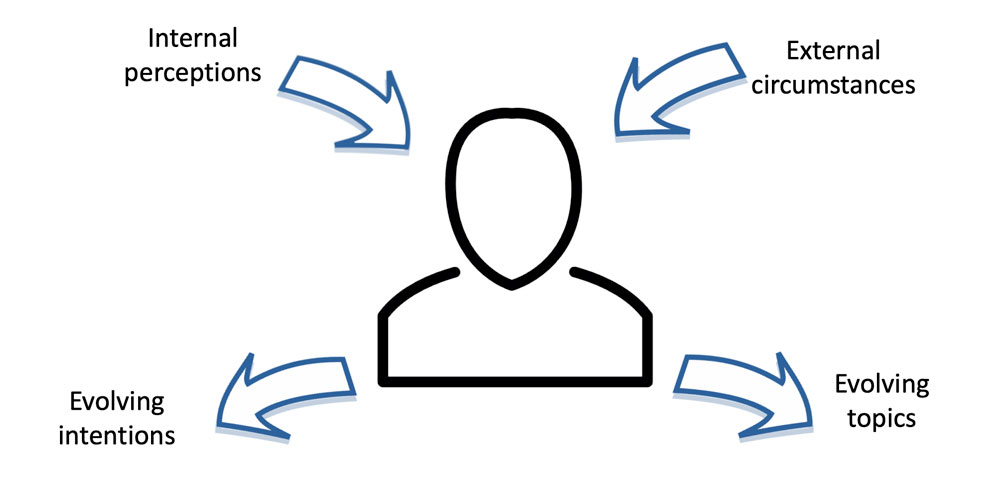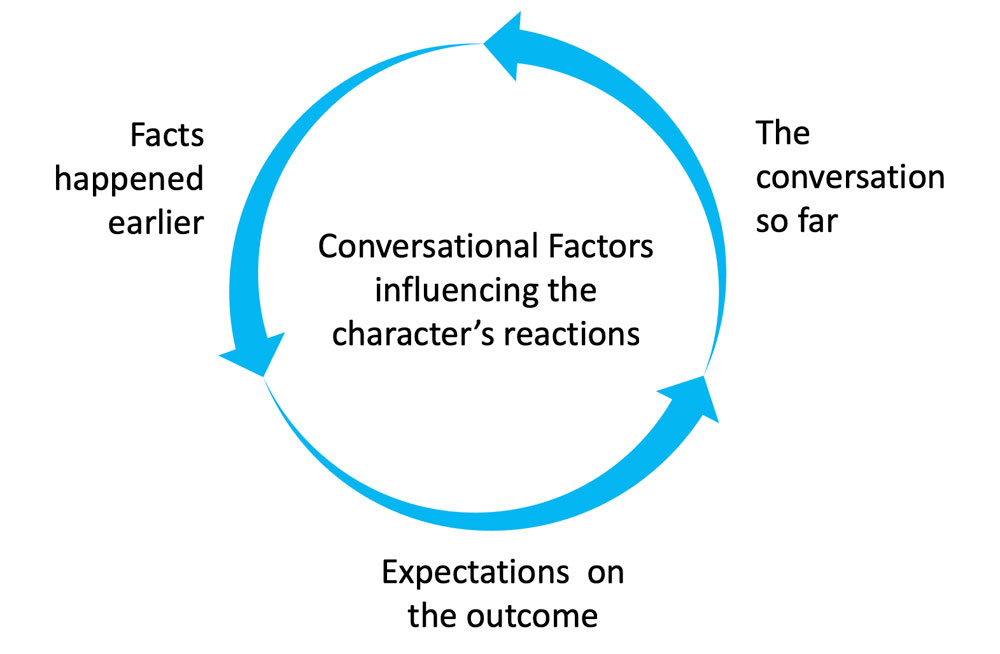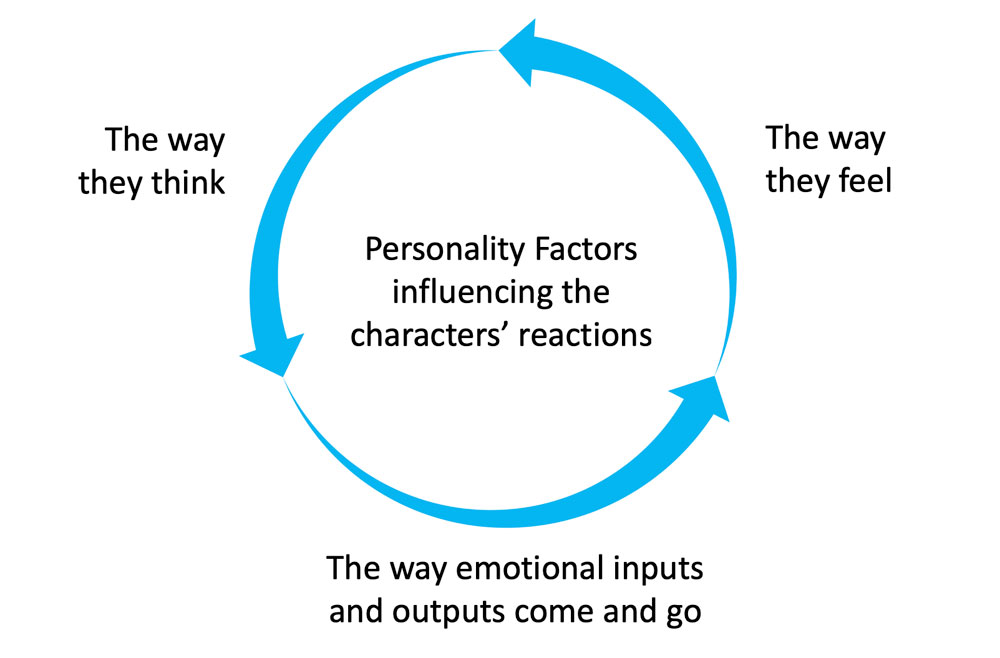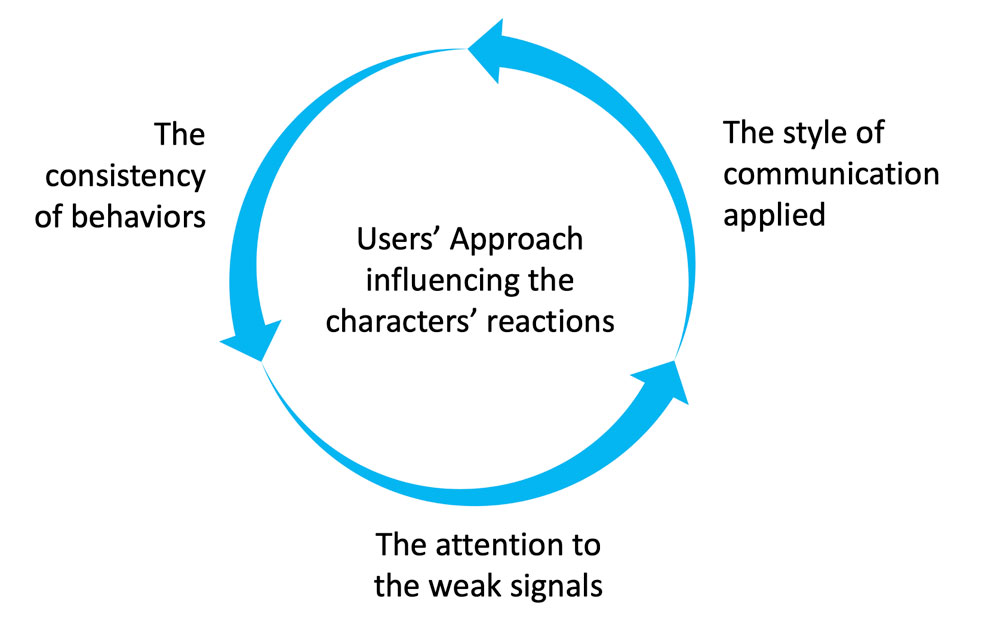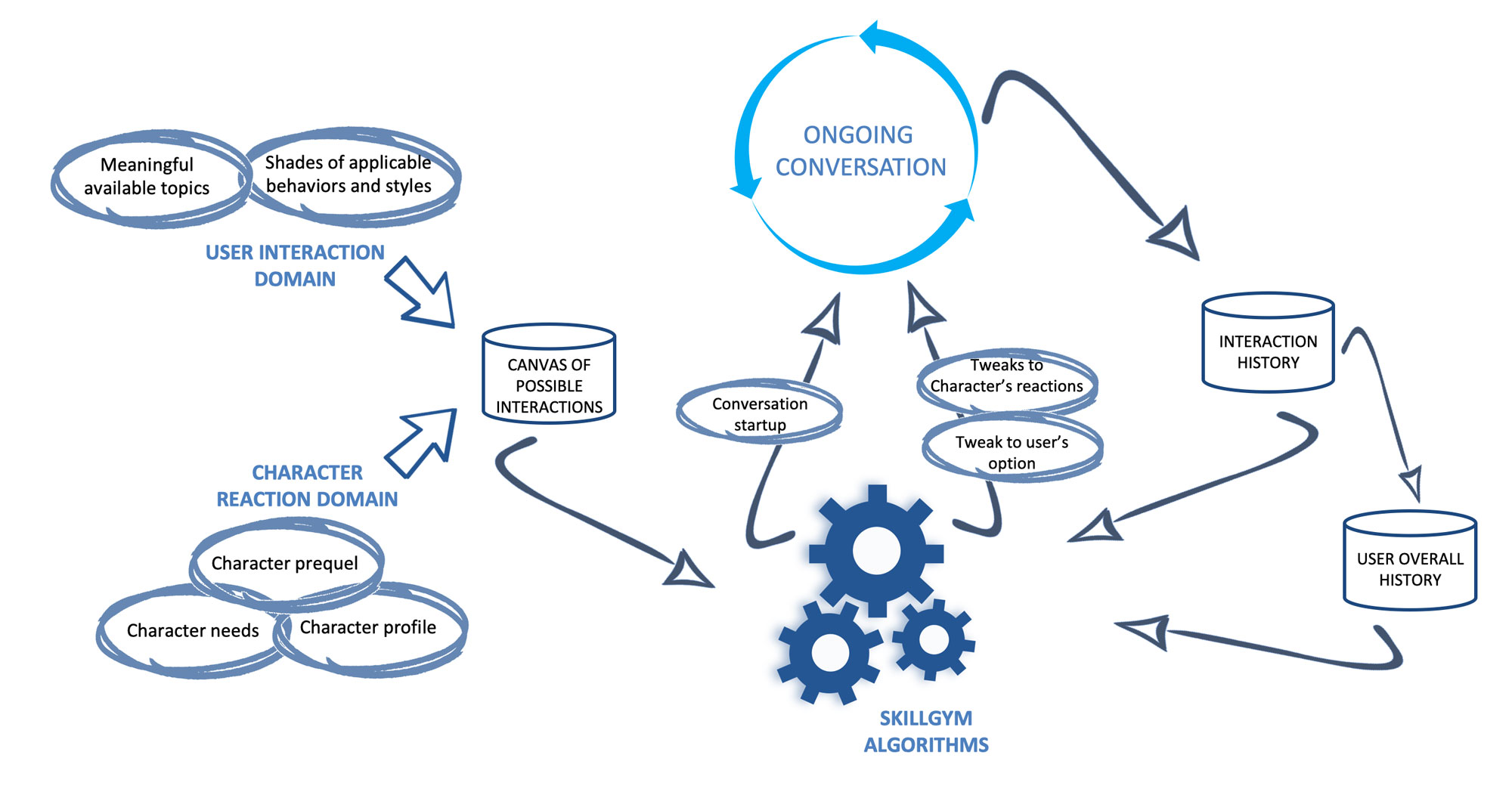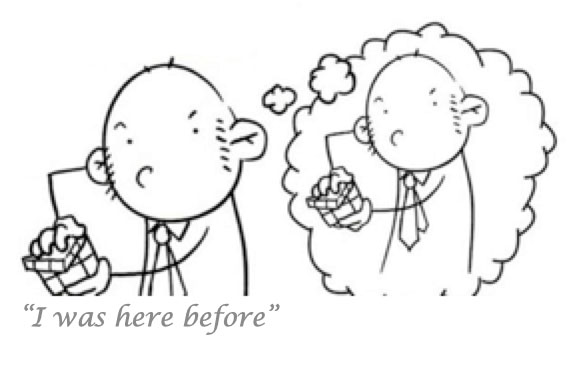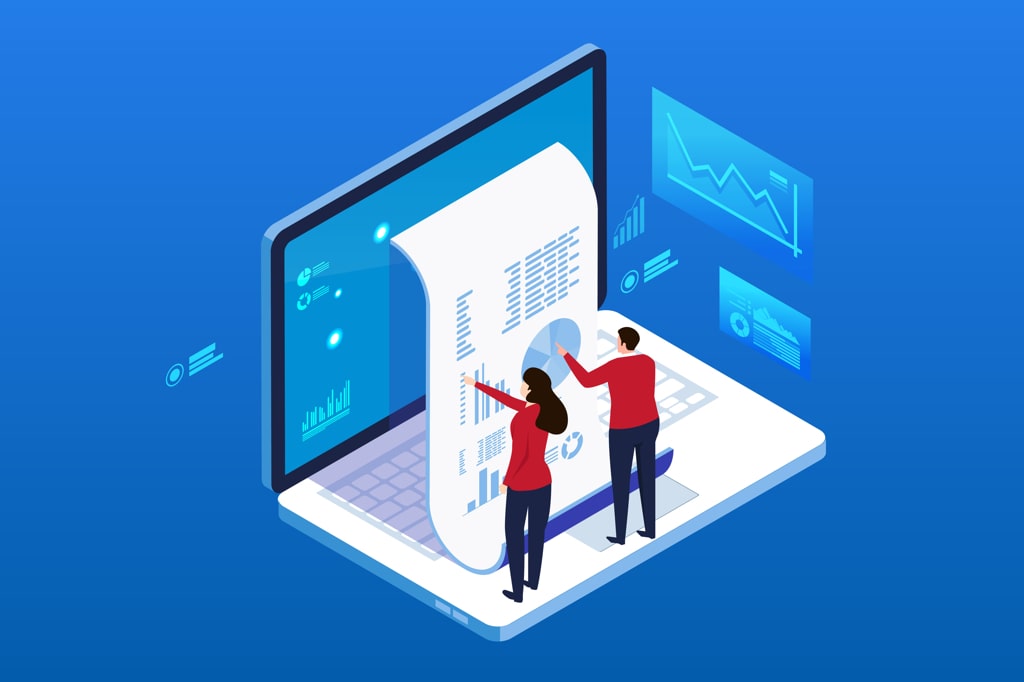
SkillGym Analytics provides the trainee with extensive information, offering the possibility to delve deep into the dynamics of a conversation in order to understand how and where behaviors can improve.
However, understanding how behaviors interact with one another and which rules influence the different KPIs, requires some fundamental knowledge of the behavioral models and methodology behind SkillGym.
In this article, we’ll review some basic information that can be very useful in accurately reading the SkillGym conversation analytics and in fully understanding how our scoring criteria work.
1) Confidence
The first and most important KPI in SkillGym is CONFIDENCE.
- From a conceptual perspective, Confidence measures the degree of courage, determination, fearlessness and self-perceived experience with which leaders approach a conversation.
From this perspective, confidence increases with experience: The more the conversation is held and the more the outcomes are reflected upon, the higher the confidence over time. Ultimately, it is the performance in conversations that matters. - From a practical perspective, SkillGym measures Confidence as the result of the overall quality with which each specific skill is used throughout the conversation. We consider not only the absolute quality of each behavior, but also the context: The specific situation and the flow (dynamic development) of the conversation.
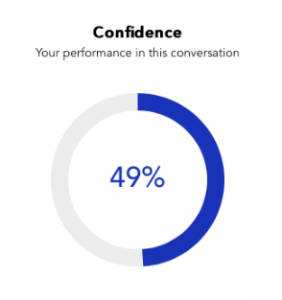
Consider that:
- In order to be well used, a skill might require a different behavior depending on the specific context. This means the same skill can be developed by using different behaviors as the context varies.
- Behaviors are “hidden” in the way the user’s sentences are presented. For example, a text box saying, “How would you like to proceed?” includes a behavior named “asking open-ended questions” related to a skill named “Asking questions”.
- Whether such behavior scores high or low depends on the context in which it is used. SkillGym measures such scores while automatically taking into account the entire (and dynamic) flow of the conversation.
The best way to improve on Confidence in SkillGym is to select sentences that you deem not only appropriate from a dialogue perspective, but also fitting in the real-time context (with whom you are talking to, how is it going so far, etc.).
Over time, by using the post-conversation analyses with the Augmented Replay, you will find it easier and easier to make this decision based on the understanding of the body language of the character in front of you.
2) Self-Awareness
Our second most important KPI is called Self-Awareness.
Self-Awareness measures the quality of the self-perception of the performance, as compared to the evaluation done by SkillGym.
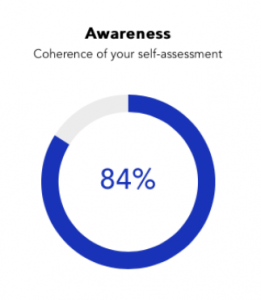
This is a very important KPI since a higher level of Self-Awareness is normally associated with better performance and a faster improvement track.
SkillGym measures Self-Awareness in this way:
- At the end of the conversation, you are presented with a self-assessment comprised of a few questions in which you evaluate your performance based on certain competencies/skills/behaviors.
- SkillGym will make the same evaluation based on your actual performance.
- The comparison between the two values results in the self-awareness score.
- The higher the self-awareness score, the closer the two evaluations are to each other.
One very interesting article about Self-Awareness and its importance as a fundamental KPI in soft-skills development can be found here (“Self-Awareness: the Single Factor Influencing the Most the Speed of Leadership Development”).
3) Objectives
In SkillGym, Objectives are three specific task-oriented outcomes that the trainee is asked to achieve during the conversation.
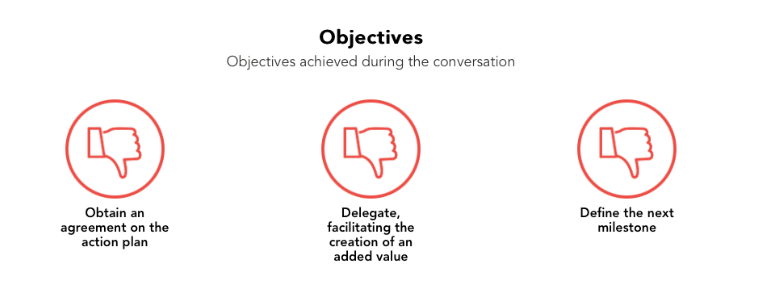
For each conversation, the three objectives are well outlined in the preparation room and, during the conversation, they are connected to three specific steps of the dialogue.
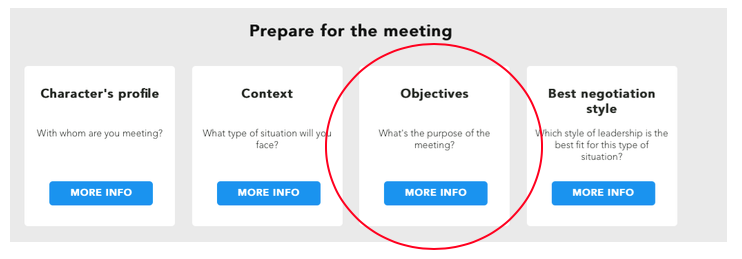
The Augmented Replay shows the position of the objectives using three small, numbered icons that can be found attached to the general timeline of the conversation at the bottom of the screen.
Their color (green or red) shows the outcome; clicking the icon will open a pop-up with a detailed description of the reasons why the objective has or has not been achieved.

The way SkillGym calculates the outcome of each objective is a bit tricky.
One of the common mistakes is to think that there is a 100% correlation between the score of Confidence and the achievement of the conversation objectives.
Although this is true in most cases (great behaviors generate great quality of the conversation that, in the end, will generate the achievement of the objectives), SkillGym is not a deterministic exercise. It is primarily a simulation where the contextual flow of the conversation matters a lot.
So for example, in certain cases even just a small deception along the way (for example an unlucky sentence at a certain point of the conversation) could upset the character to the point where at the moment of deciding whether or not to adhere to what you propose (typically one of the objectives of the conversation) he will react the other way.
The result could then be:
- A reasonably high score in Confidence (in our example one or two low-scoring behaviors won’t affect this score that much), but
- Still one (or sometimes more) objectives not achieved
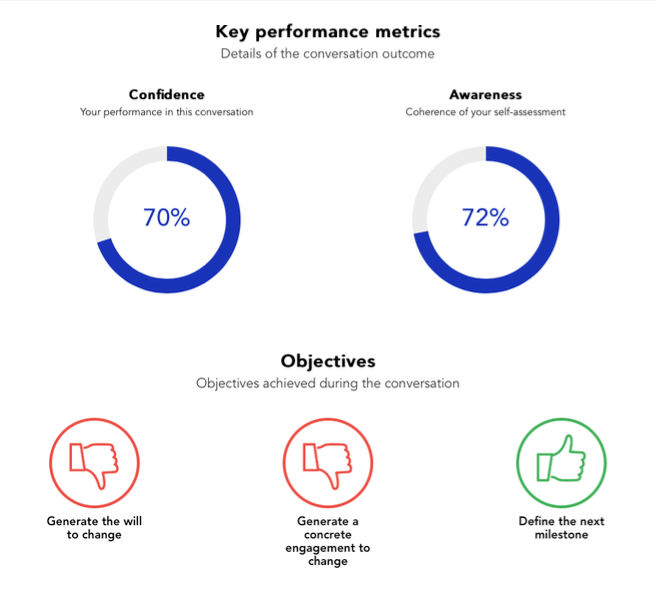
Of course, this won’t happen that frequently. However, it is important to keep in mind that every behavior counts in a conversation, which is why we separate these two important KPIs – Confidence and Objective – to support trainees in experiencing the actual degree of balancing between the two dimensions.
It can even occur sometimes that the character shows a good reaction (You can check this inside the Augmented Replay, by taking a look at the single objective; in the picture below it’s where it says “genuine”).
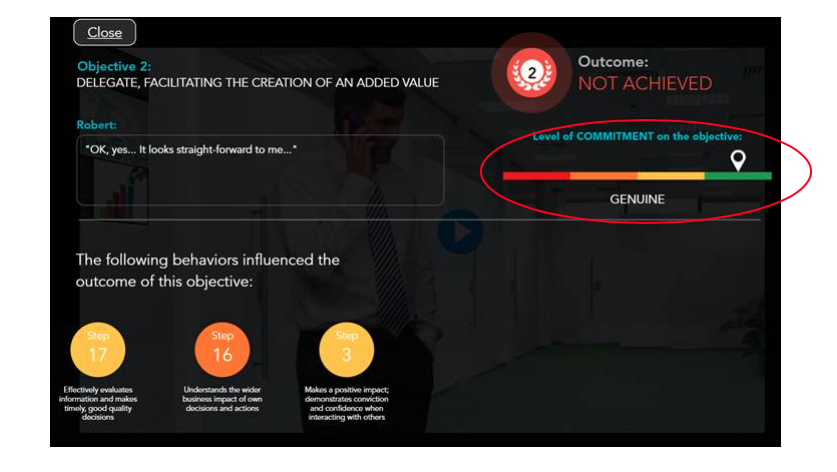
The objective can still be marked as “not achieved” because of the trainee’s earlier behaviors that will still impact the outcome at the end of the conversation. (In this case, the simulation presumes that the character’s good – still instantaneous – reaction will be overcome by the overall weight of some negatively associated behaviors).
Again, this won’t happen frequently, but it’s worth considering as a good lesson.
4) Phases
SkillGym provides the trainees with the opportunity to understand the impact of their behaviors at different phases of a conversation. Although the conversation is a continuum where every single step is influenced by what happened before and influences what will happen next, for the purpose of learning and development, it is interesting to analyze its dynamics by splitting the entire exercise into smaller chunks.

At this level, the Analytics will present a certain number of macro-steps (or “phases”) for which the trainees can understand the relative quality of their Confidence score for each step. Such score is measured in percentage and also visualized with a very intuitive color code.
This allows trainees to work on these metrics in order to select a specific area of the conversation upon which to improve.
5) Competencies
We discuss how a Competency model works in SkillGym in this very interesting article (“Making a Competency Model Truly Actionable in People’s Development”), which we recommend reading for a more in-depth description of this important set of KPIs.
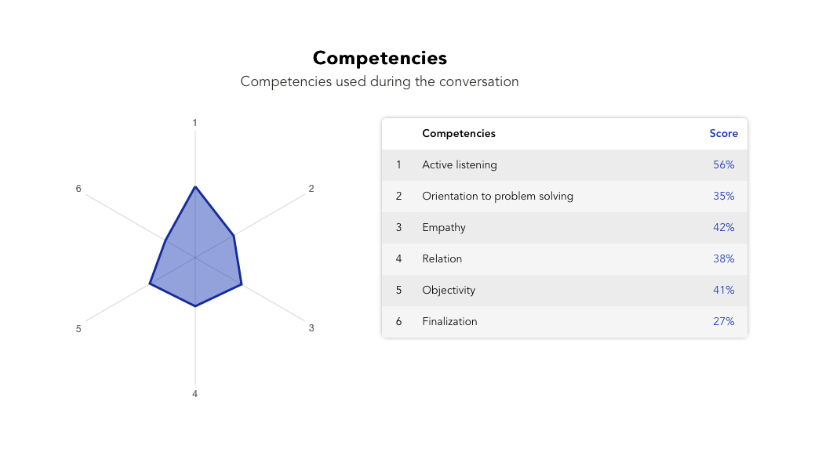 In short:
In short:
- Competencies are measured on observable behaviors, and observable behaviors are the way the dialogue is built.
- So, every time you choose a sentence, you are expressing one observable behavior.
- According to the specific context in which that sentence was used, such behavior will get a score.
- The scores of different behaviors – measured along the way – are summed up according to SkillGym’s competency mapping model (most often remapped on the competency model of our customer).
Since competencies are an aggregated measure, their interpretation is more powerful when analyzed as the result of multiple conversations played over time. However, they can be a good indicator even at the end of a single conversation.
In fact, many employees are presented with Competency models that sometimes look a little abstract and they are not easy to apply to everyday behaviors. That’s why measuring the outcome of a conversation against a competency model can be an useful exercise.
What’s next
Imagine how much faster and smarter your Leaders can grow their skills, gain confidence and self-awareness as well as gain experience in Critical Conversations by practicing in a Digital Role Play system like SkillGym, which provides up to eight different learning triggers of this kind.
You may now be interested in trying the power of SkillGym.
Please also peruse our website. There are plenty of inspiring pre-recorded webinars and articles. Of course, we would be delighted to continue this conversation with you; simply book a 1-hour discovery call here.
